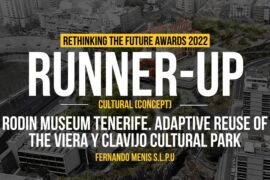The design for this academic project involved from the idea of making a museum “participatory”. Visitors who come to museums often loose interest when there is a lot of confusing circulation involved or when the building lacks legibility and hence they are unaware of the displays of interest in different locations. Hence this project was designed incorporating solutions for such issues.

Architects: Riya Rani Satheesh
Status: Concept
Making a museum participatory doesn’t necessarily mean that the exhibits should be interactive. The basic planning of this museum is based on locating different exhibits in strategic locations, in a way that, at any point in the museum, the user is able to see a glimpse of the other exhibits. This invokes a sense of curiosity , which leads to further exploration by the visitors.
Use of movable furniture and use of different patterns that continue from floor to ceiling, has been used through out this museum so that the users, especially the kids, have the tendency to follow such elements and thereby visiting the different attractions.

In addition to this, use of glass floors, and mezzanines gives users unique experience to directly interact with a built space which in turn becomes an exhibit on its own
A strong feature wall has been used to completely separate the museum into its public zone, and its private and service zone, and thereby controlling and segregating the users for efficiency.





Riya Rani Satheesh
Riya is a final year undergraduate architecture student at Faculty of Architecture, Manipal University. She is from Kerala, India, and has always cared for designing spaces that articulates and invokes the emotions of its users. Her thesis on Intergenerational Centre , was appreciated for focusing on invoking such emotions in bringing together different generations , and was selected for NIASA, an Awards Programme for Excellence in Architectural Thesis conducted by Council of Architecture. She is currently an architectural intern at Gensler and aspire to be the kind of architect that builds “feelings”.





